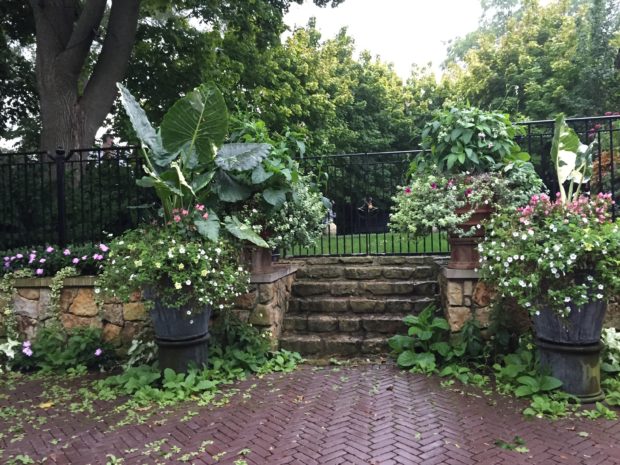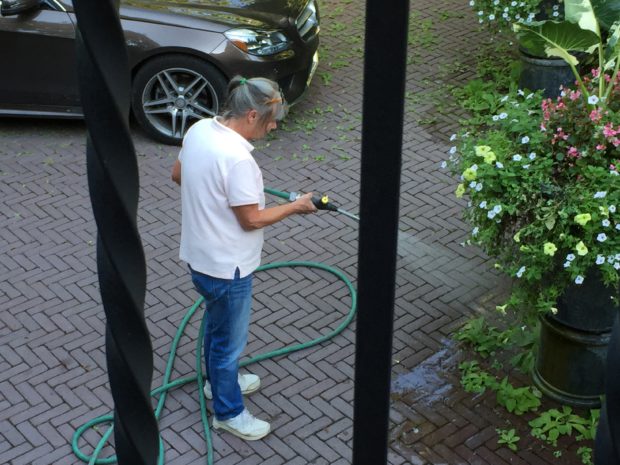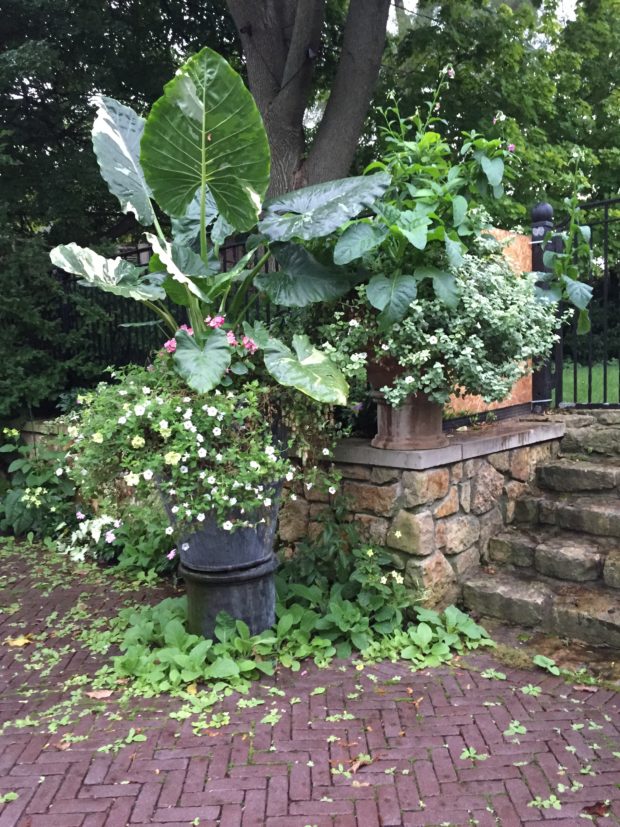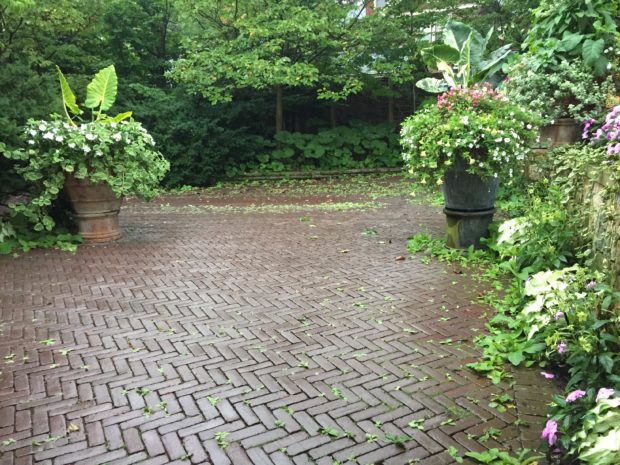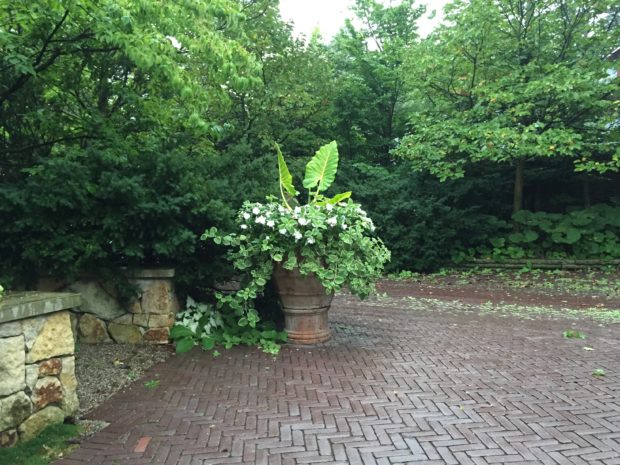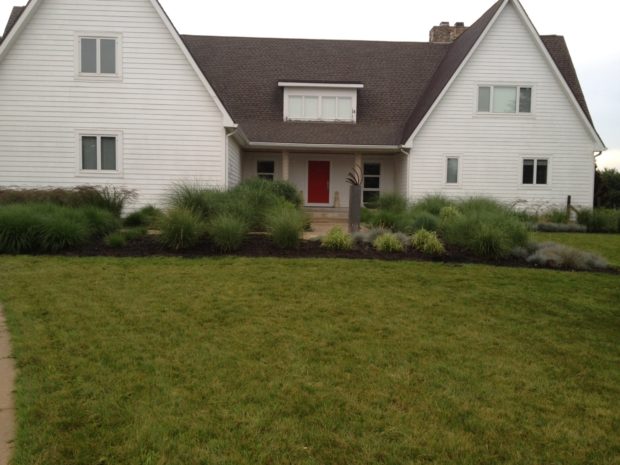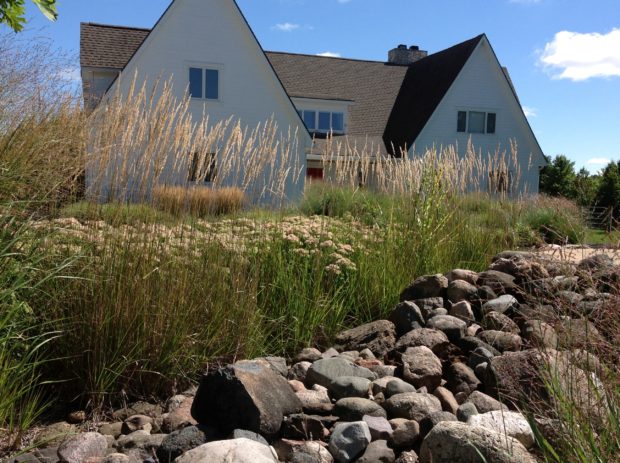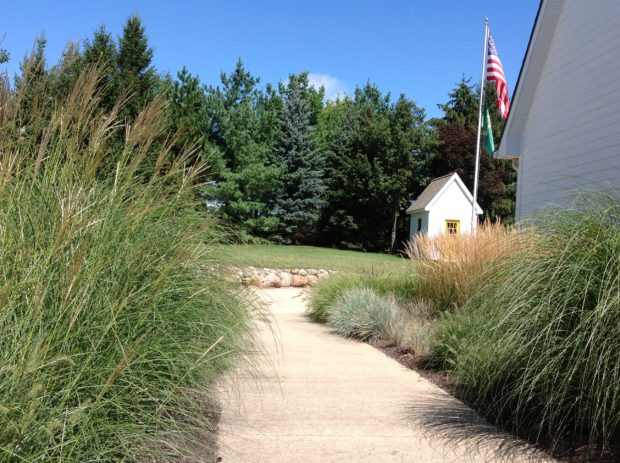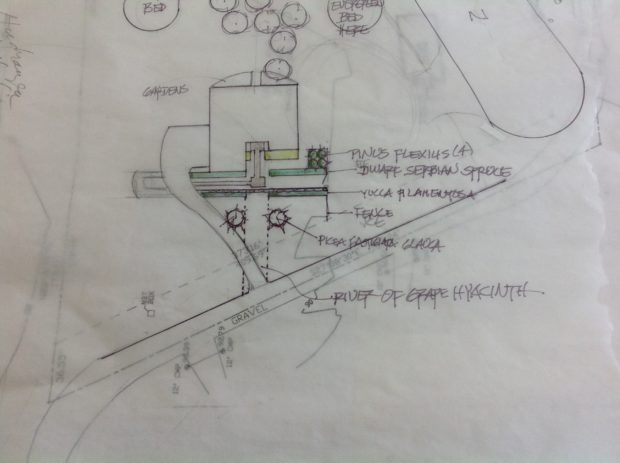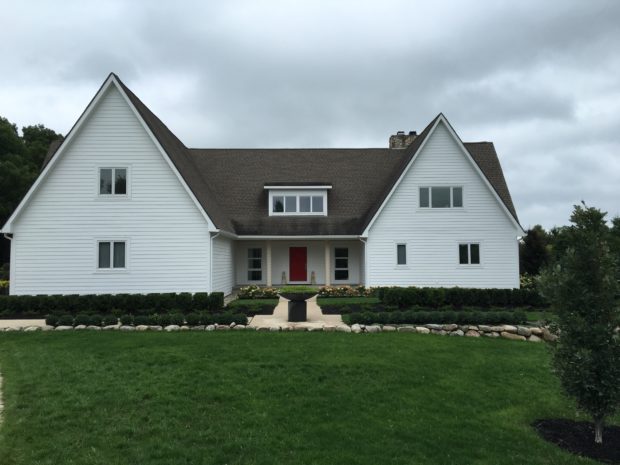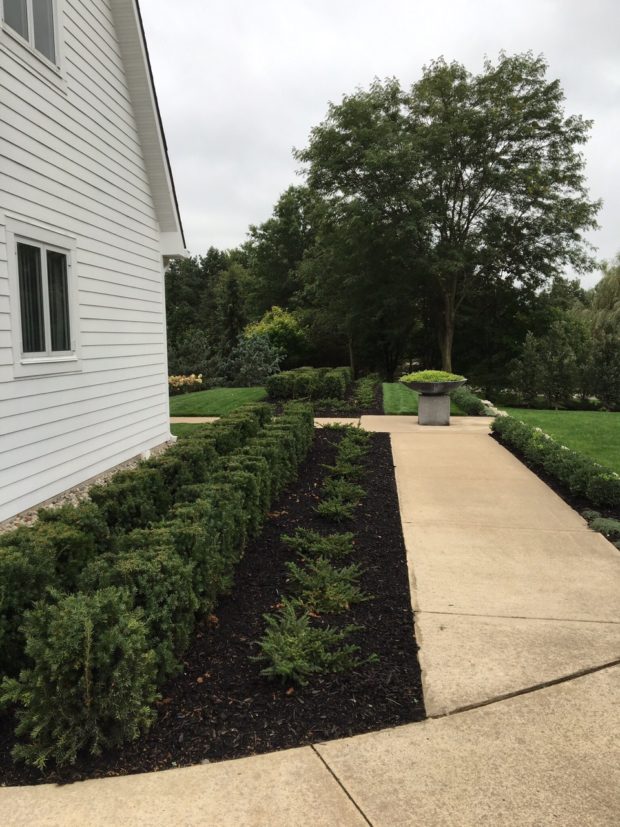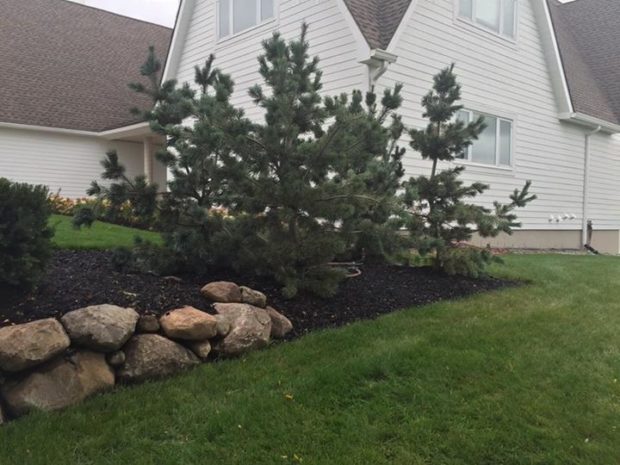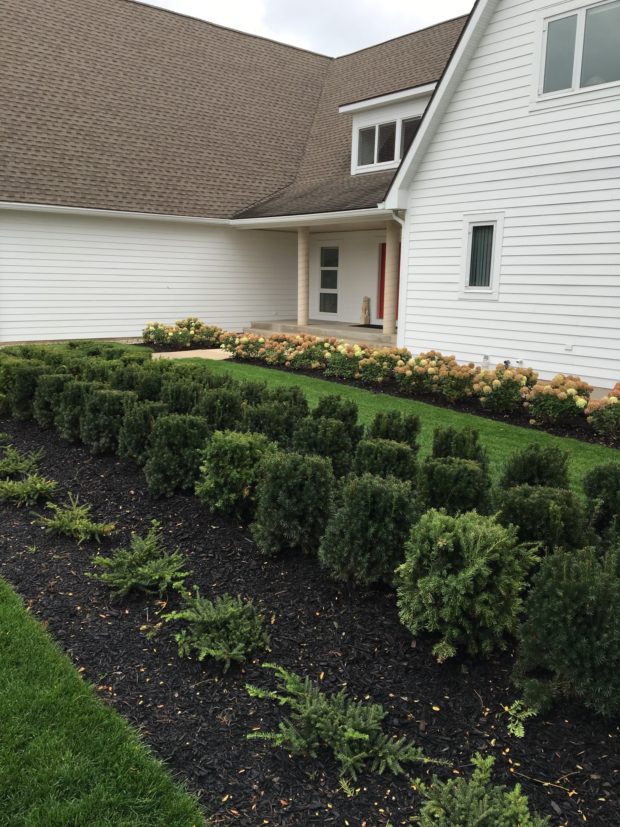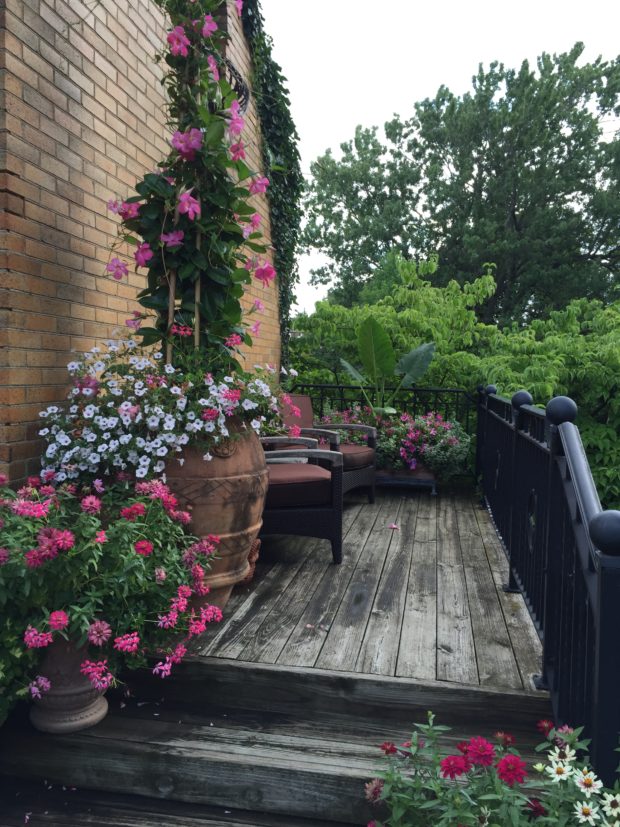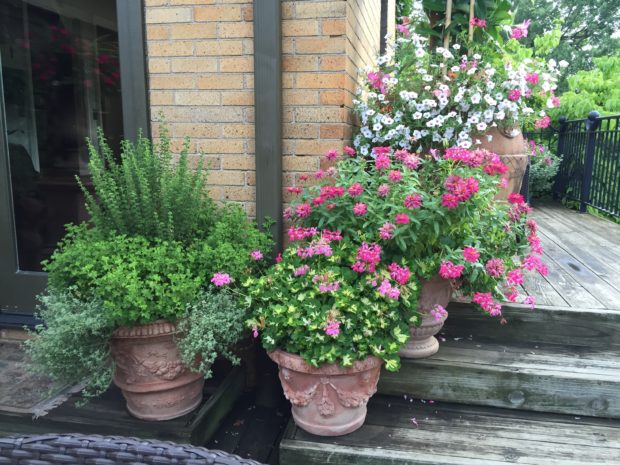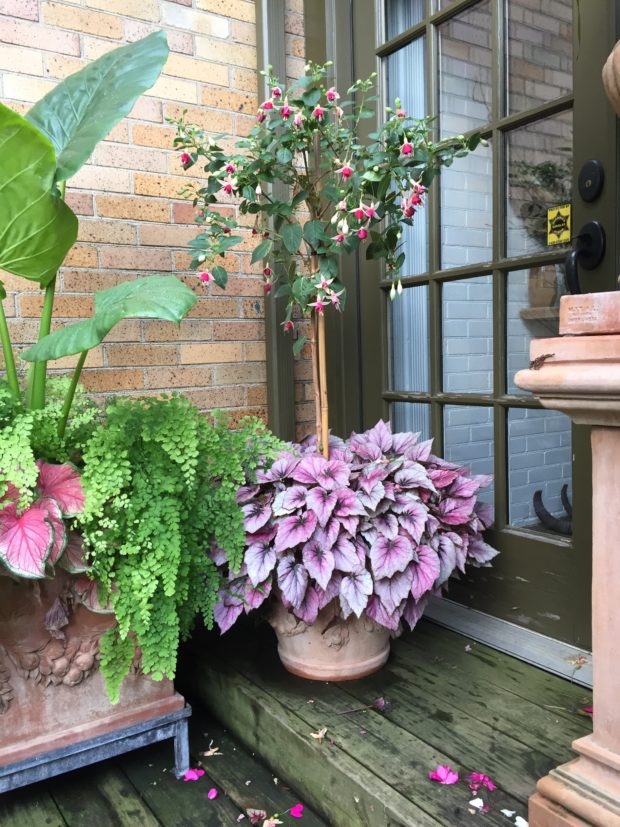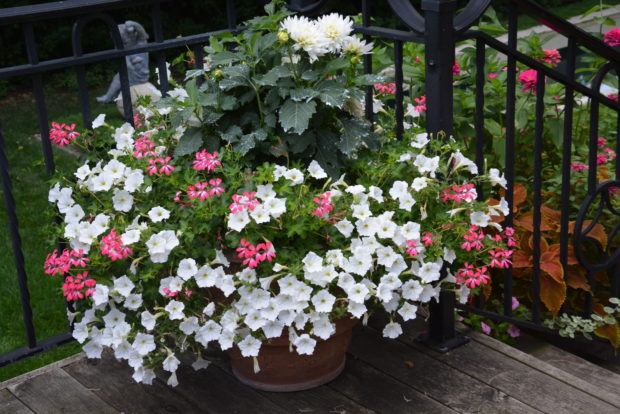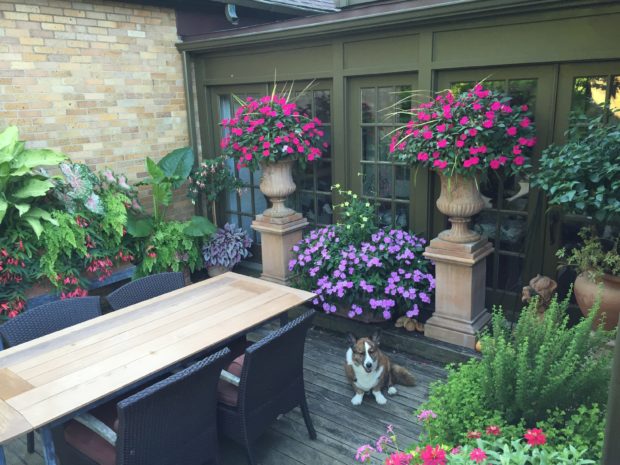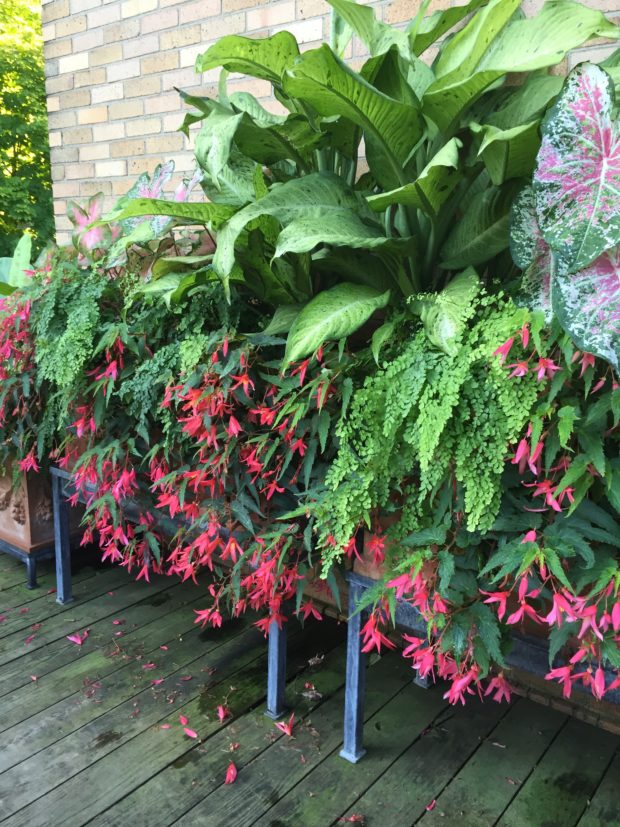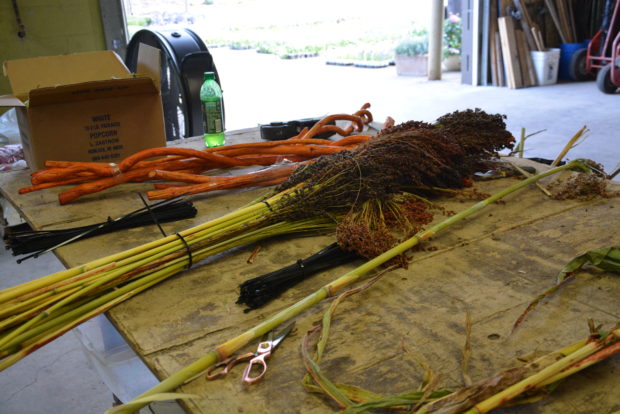 If you read this journal of mine regularly, you know that in addition to my passion for landscape design, I am a devoted fan of planted containers. Part of that attraction has to do with an interest in the containers themselves. Whether it be an antique urn, a mid century concrete planter, or a re-purposed galvanized barrel, beautiful and interesting containers endow a garden with the personality of the gardener in charge. A great container is a sculpture that happens to provide a home for a collection of seasonal plants. A container planting is a one season only, miniature version of the landscape. A statement about the the garden in real time. I am very interested in how gardeners express themselves in a container planting. Any gardener that takes the time and trouble to plant containers every season is a gardener who has my interest. How so? I am a fan of any devoted and serious effort in the garden. I plant my pots differently every year. That is the fun and the challenge of container plantings. Will I like this years crop of pots better than last year’s? That short three month window will tell. Not having to live with this collection of plants for longer than a season means I am more likely to feel free enough to experiment. The landscape is much about developing a relationship that is deep, wide, and long standing. In contrast, a container planting is a celebration of the season at hand. The joy of the moment. I have a whole season to reflect on what I have done, without any worry about the future. A container planting is about being present. They are a perfect foil for the landscape, which is as much about the years as it is about the effort.
If you read this journal of mine regularly, you know that in addition to my passion for landscape design, I am a devoted fan of planted containers. Part of that attraction has to do with an interest in the containers themselves. Whether it be an antique urn, a mid century concrete planter, or a re-purposed galvanized barrel, beautiful and interesting containers endow a garden with the personality of the gardener in charge. A great container is a sculpture that happens to provide a home for a collection of seasonal plants. A container planting is a one season only, miniature version of the landscape. A statement about the the garden in real time. I am very interested in how gardeners express themselves in a container planting. Any gardener that takes the time and trouble to plant containers every season is a gardener who has my interest. How so? I am a fan of any devoted and serious effort in the garden. I plant my pots differently every year. That is the fun and the challenge of container plantings. Will I like this years crop of pots better than last year’s? That short three month window will tell. Not having to live with this collection of plants for longer than a season means I am more likely to feel free enough to experiment. The landscape is much about developing a relationship that is deep, wide, and long standing. In contrast, a container planting is a celebration of the season at hand. The joy of the moment. I have a whole season to reflect on what I have done, without any worry about the future. A container planting is about being present. They are a perfect foil for the landscape, which is as much about the years as it is about the effort.
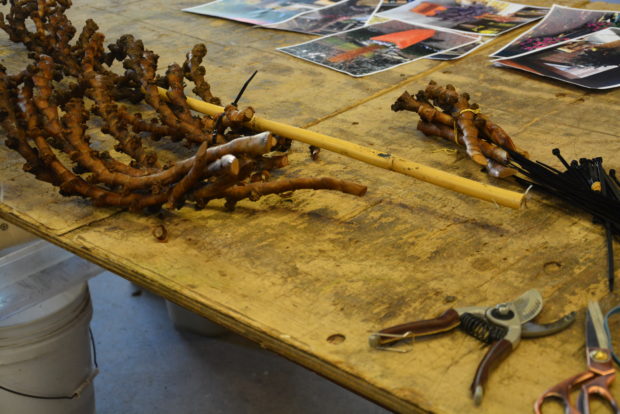 Given that the fall season is dead ahead, we have begun planting containers for fall. We frequently construct centerpieces for the pots from natural and dried materials. It is not only of visual interest to include harvested materials, but those materials help to provide scale and volume to the container arrangements. At the center of every centerpiece is a bamboo pole. All of the materials are attached to that pole with zip ties. That stake gets pounded down into the container when it is installed. The pole driven deep in the soil is what keeps that centerpiece aloft, and perfectly vertical.
Given that the fall season is dead ahead, we have begun planting containers for fall. We frequently construct centerpieces for the pots from natural and dried materials. It is not only of visual interest to include harvested materials, but those materials help to provide scale and volume to the container arrangements. At the center of every centerpiece is a bamboo pole. All of the materials are attached to that pole with zip ties. That stake gets pounded down into the container when it is installed. The pole driven deep in the soil is what keeps that centerpiece aloft, and perfectly vertical.
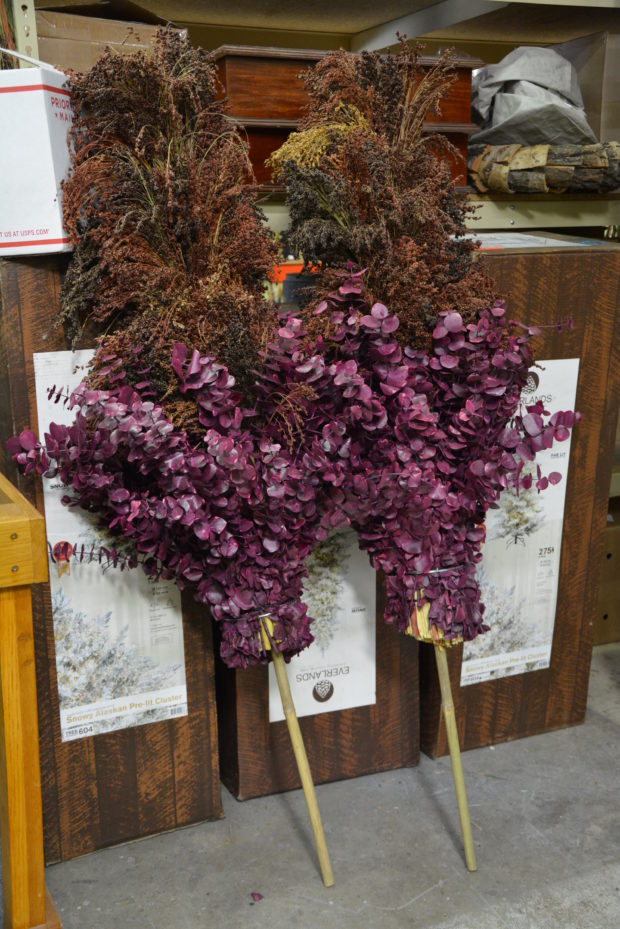 Fresh cut broom corn is a staple in our fall pots. Sorghum vulgare is a very tall coarse growing plant that somewhat resembles corn. The plant is largely used in the production of corn brooms and whisks. The seeds are arranged on panicles about 20 inches long. Once the seed is removed, those wiry panicles are used in the production of brooms. Corn brooms are sturdy, and long lasting. But the cut stems of broom corn, thick with mature seeds, adds a lot of color and textural interest to a fall arrangement. Over the course of the fall, the birds will feed on the broom corn stalks in our arrangements. I like this. The stems and seed heads are quite heavy, so we anchor tall centerpieces to 3/4″ thick bamboo poles.
Fresh cut broom corn is a staple in our fall pots. Sorghum vulgare is a very tall coarse growing plant that somewhat resembles corn. The plant is largely used in the production of corn brooms and whisks. The seeds are arranged on panicles about 20 inches long. Once the seed is removed, those wiry panicles are used in the production of brooms. Corn brooms are sturdy, and long lasting. But the cut stems of broom corn, thick with mature seeds, adds a lot of color and textural interest to a fall arrangement. Over the course of the fall, the birds will feed on the broom corn stalks in our arrangements. I like this. The stems and seed heads are quite heavy, so we anchor tall centerpieces to 3/4″ thick bamboo poles.
 We use lots of other materials for these fall centerpieces. Fresh cut millet, preserved millet, preserved eucalyptus and all manner of dried materials can all be built into a fall centerpiece. We are just as likely to shop the garden, or the field at our landscape yard for branches, the dried perennial seed heads of hibiscus, acanthus, and echinacea, and maturing weeds. The shop carries a great variety of materials that can be incorporated into a fall container. Though the fall signals the beginning of that time when the garden goes dormant, the fall harvest is a time to be celebrated.
We use lots of other materials for these fall centerpieces. Fresh cut millet, preserved millet, preserved eucalyptus and all manner of dried materials can all be built into a fall centerpiece. We are just as likely to shop the garden, or the field at our landscape yard for branches, the dried perennial seed heads of hibiscus, acanthus, and echinacea, and maturing weeds. The shop carries a great variety of materials that can be incorporated into a fall container. Though the fall signals the beginning of that time when the garden goes dormant, the fall harvest is a time to be celebrated.
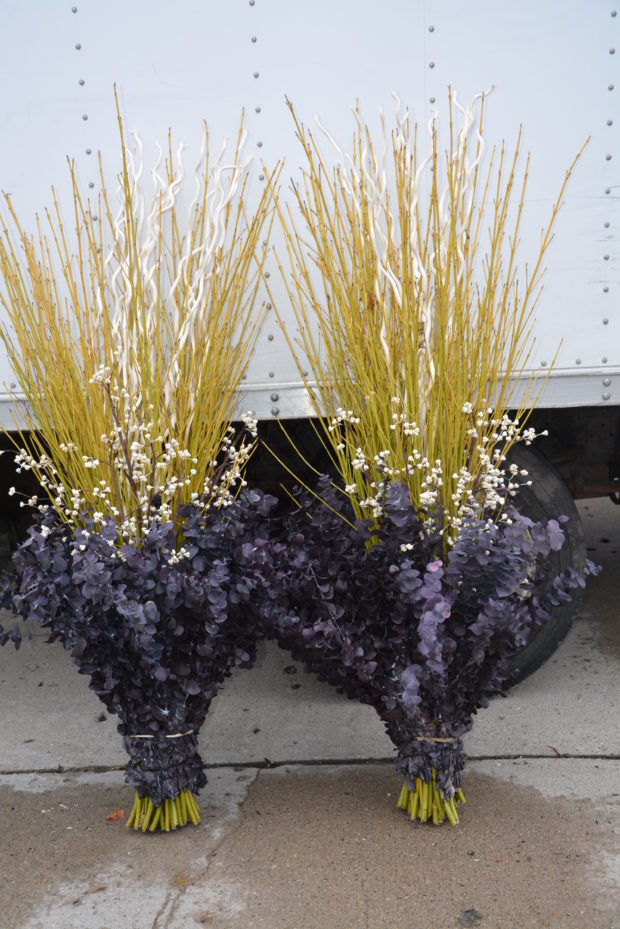 These centerpieces were made for a client that wanted something that would last the fall and go on throughout the winter season. The yellow twig dogwood is exceptionally long lasting, but for a fall arrangement we needed to strip off the leaves. Preserved eucalyptus will last outdoors for months without deteriorating. The white berries are artificial, but convincing even in close proximity. What got planted at the base of this arrangement in the fall did have to be changed for the winter. Her interest was in a pair of front porch pots that would be inviting beyond the summer season. We were happy to oblige.
These centerpieces were made for a client that wanted something that would last the fall and go on throughout the winter season. The yellow twig dogwood is exceptionally long lasting, but for a fall arrangement we needed to strip off the leaves. Preserved eucalyptus will last outdoors for months without deteriorating. The white berries are artificial, but convincing even in close proximity. What got planted at the base of this arrangement in the fall did have to be changed for the winter. Her interest was in a pair of front porch pots that would be inviting beyond the summer season. We were happy to oblige.
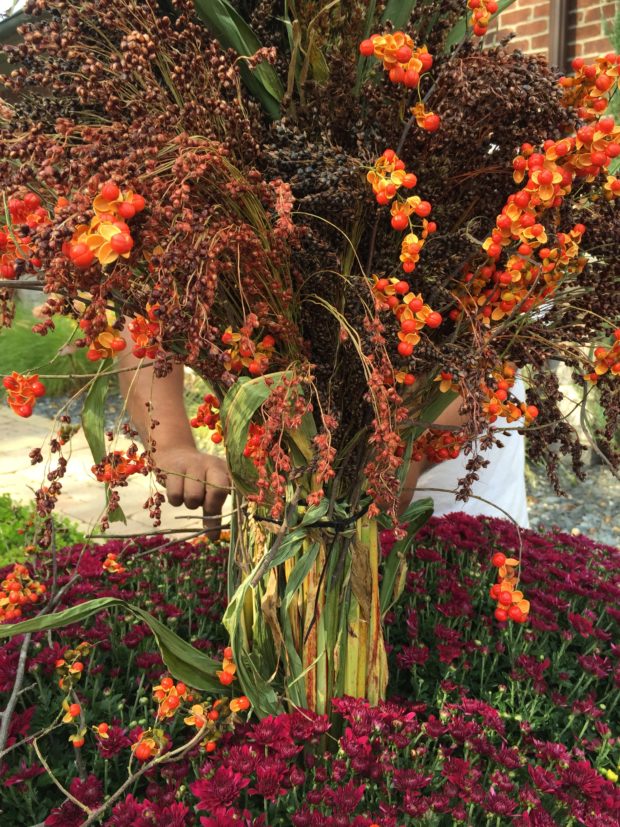 The orange berries from the American bittersweet vine are vibrant, and so appropriate to the fall season. These woody fruiting vines can loosen up a static arrangement. If we use bittersweet in a fall pot, we add it to the centerpiece after it is installed. Some elements in fall containers ask for a last minute addition. Every airy gesture made at the last minute is the most personal gesture. Personal gestures in the garden are remarkable. Those I have seen, I remember.
The orange berries from the American bittersweet vine are vibrant, and so appropriate to the fall season. These woody fruiting vines can loosen up a static arrangement. If we use bittersweet in a fall pot, we add it to the centerpiece after it is installed. Some elements in fall containers ask for a last minute addition. Every airy gesture made at the last minute is the most personal gesture. Personal gestures in the garden are remarkable. Those I have seen, I remember.
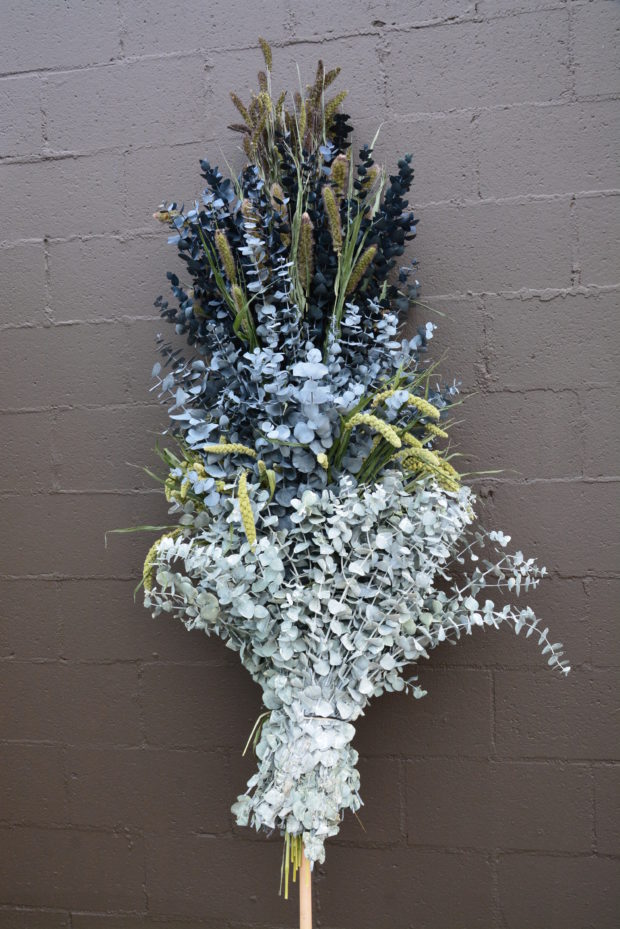 Not every fall centerpiece has to be yellow, orange, red and brown. A fall color scheme can take its cue from an architectural feature, or the preference of the gardener. This client had a particular love for rainy fall days. This is our interpretation.
Not every fall centerpiece has to be yellow, orange, red and brown. A fall color scheme can take its cue from an architectural feature, or the preference of the gardener. This client had a particular love for rainy fall days. This is our interpretation.
 Another client with small children makes every effort to engage her children with nature. For her, we combine a simple centerpiece with pumpkins on a stick. Container plantings are personal. A garden with personality is much to be admired.
Another client with small children makes every effort to engage her children with nature. For her, we combine a simple centerpiece with pumpkins on a stick. Container plantings are personal. A garden with personality is much to be admired.
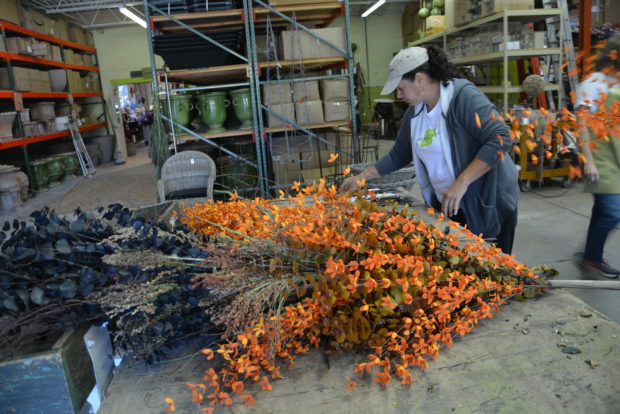 A fall container centerpiece can be simple or elaborate. It can be a combination of fresh and dried materials. A hydrangea topiary you have had in a pot all summer can do duty in the fall season. It can be a fistful of weeds from the lot next door. It can be anything you wish. The important thing is to endow your garden with a personal expression of the season. It is a world of good to answer the close of the gardening season with beautiful fall containers. The fall centerpiece is the first part of that seasonal gesture. What comes next in that pot is up to you.
A fall container centerpiece can be simple or elaborate. It can be a combination of fresh and dried materials. A hydrangea topiary you have had in a pot all summer can do duty in the fall season. It can be a fistful of weeds from the lot next door. It can be anything you wish. The important thing is to endow your garden with a personal expression of the season. It is a world of good to answer the close of the gardening season with beautiful fall containers. The fall centerpiece is the first part of that seasonal gesture. What comes next in that pot is up to you.
 whitewashed ladder branches and orange millet
whitewashed ladder branches and orange millet
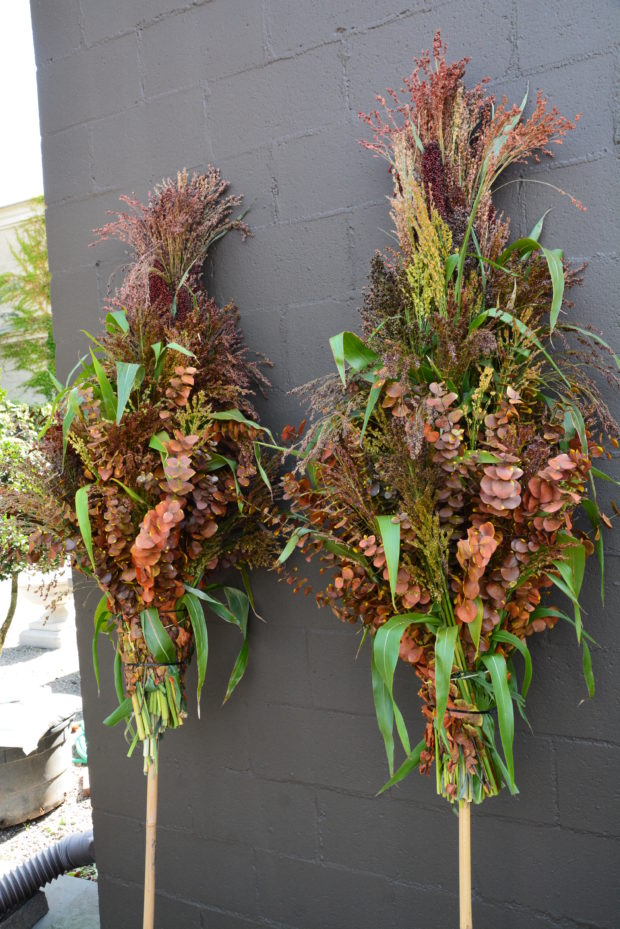 broomcorn and preserved eucalyptus
broomcorn and preserved eucalyptus
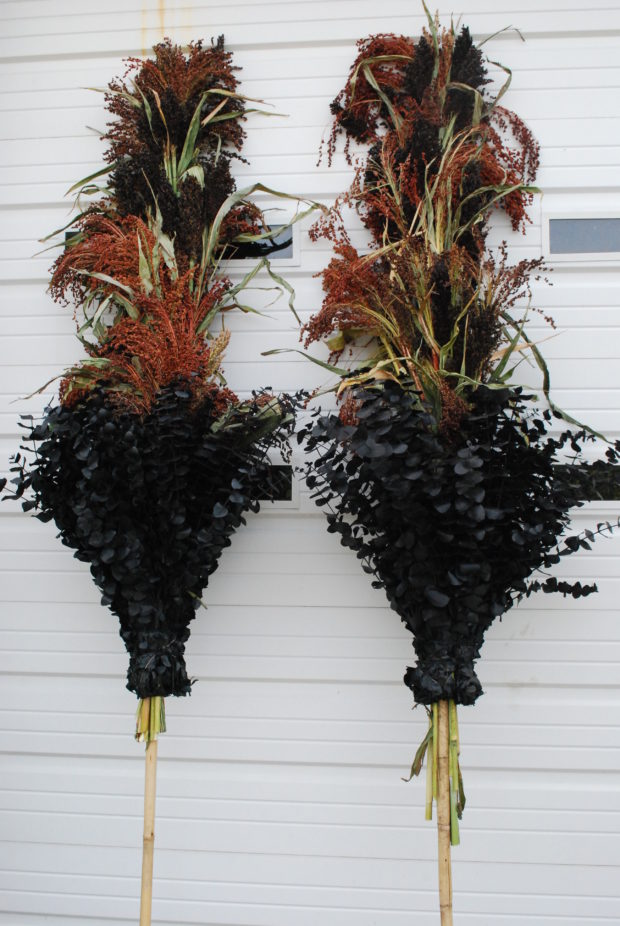 layered centerpiece with broom corn and preserved and dyed black eucalyptus
layered centerpiece with broom corn and preserved and dyed black eucalyptus
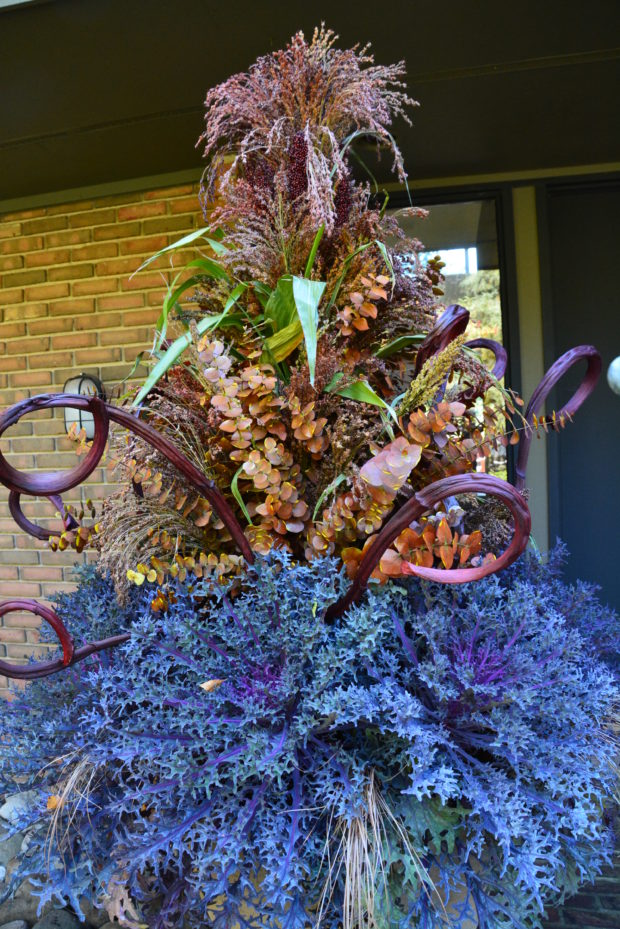 fall centerpiece with fresh cut broom corn, caramel preserved and dyed eucalyptus, and dyed banana stems
fall centerpiece with fresh cut broom corn, caramel preserved and dyed eucalyptus, and dyed banana stems
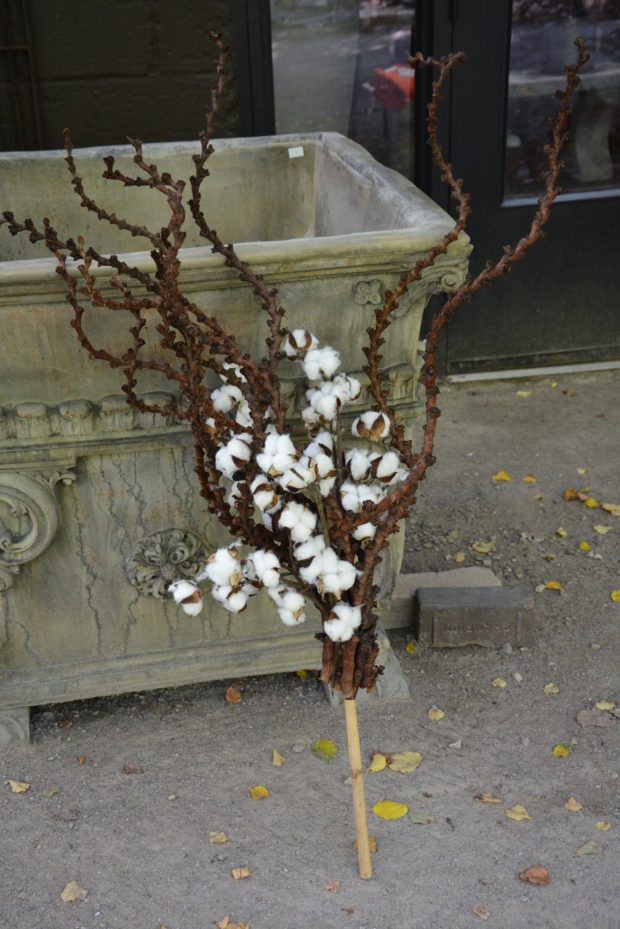 Planting fall containers are a favorite part of my designing life in late September and October.
Planting fall containers are a favorite part of my designing life in late September and October.



